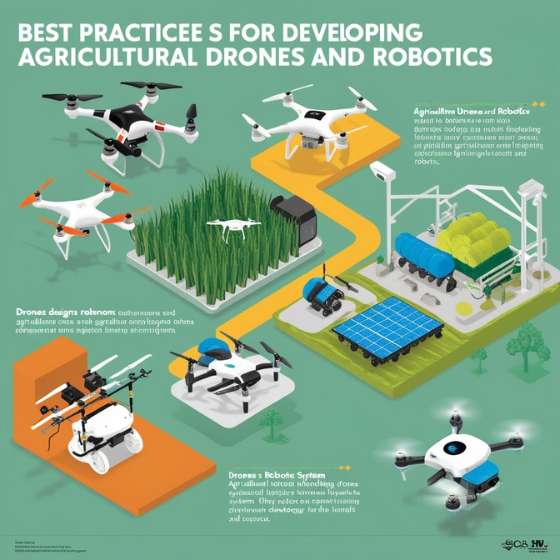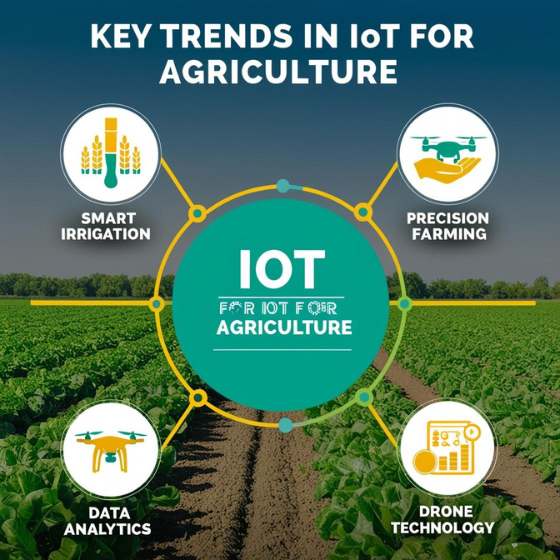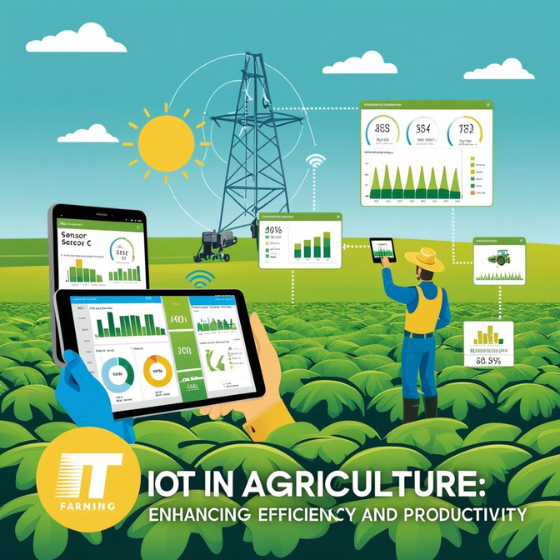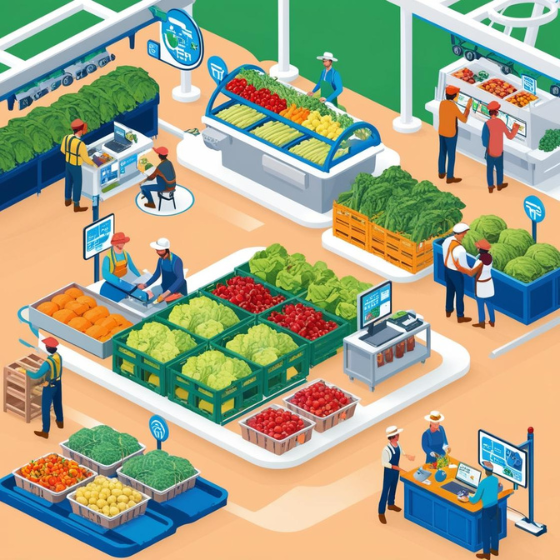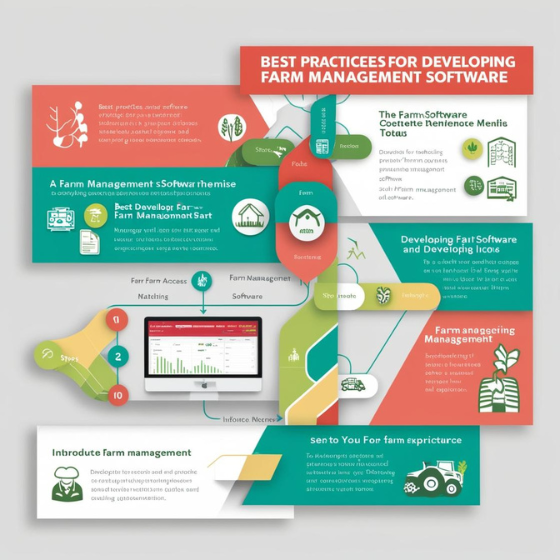Agribusiness Marketplaces: Connecting Farmers and Buyers
The agriculture industry has always been a cornerstone of the global economy, but the way farmers and buyers connect has evolved significantly in recent years. With the rise of digital platforms, agribusiness marketplaces have emerged as powerful tools for bridging the gap between farmers and buyers, transforming how agricultural goods are bought and sold. In this blog, we will explore how agribusiness marketplaces are reshaping the agricultural landscape, the benefits they provide, and the best practices for building and utilizing these platforms to foster strong connections in the industry.
What is an Agribusiness Marketplace?
An agribusiness marketplace is an online platform that connects farmers, producers, suppliers, and buyers within the agriculture industry. These platforms serve as digital ecosystems where agricultural products, services, and equipment are traded. Unlike traditional methods of farming, which often involve intermediaries such as wholesalers or brokers, agribusiness marketplaces enable direct transactions between buyers and sellers, enhancing efficiency and reducing costs.
Key benefits of these digital platforms include:
- Direct access to buyers: Farmers can reach a wider range of buyers without relying on third parties.
- Streamlined transactions: Digital platforms automate much of the selling and purchasing process, making transactions faster and easier.
- Transparency: Buyers and sellers can access product details, pricing, and reviews, helping to build trust and clarity.
Why Agribusiness Marketplaces are Becoming Essential
The rise of agribusiness marketplaces comes as a result of several changing dynamics in the global agricultural landscape. Traditional methods of agricultural sales, including physical marketplaces, wholesalers, and auction houses, have limitations in terms of accessibility, transparency, and scalability. Agribusiness marketplaces provide significant advantages in the following areas:
1. Expanding Market Access
Farmers, especially those in rural or remote areas, often face difficulties in accessing larger markets. Traditional methods can be limiting, as farmers must rely on local buyers or brokers who might not offer competitive pricing or broader market opportunities.
Agribusiness marketplaces break down geographic barriers, enabling farmers to connect with buyers from across the globe. Buyers, too, can access a diverse array of suppliers and choose the best options available for their needs.
- Global reach: Farmers can tap into international markets, enabling them to sell their products to a wider range of customers.
- More competition: Buyers benefit from increased competition, which can lead to better prices and more options.
2. Enhanced Efficiency and Cost Reduction
One of the primary benefits of agribusiness marketplaces is the significant reduction in transactional friction. Traditional farming markets often require farmers to invest time and money in distribution channels, intermediaries, and marketing efforts. These costs are reduced or eliminated with the digital transformation provided by marketplaces.
- Automated payments: Farmers and buyers can transact instantly with secure, digital payment systems.
- Logistics support: Marketplaces often offer integrated logistics solutions, helping with transportation, warehousing, and delivery of goods.
3. Data-Driven Decisions
Agribusiness marketplaces collect vast amounts of data about transactions, customer behavior, and market trends. This data is invaluable for farmers and buyers who can use it to make informed decisions. For farmers, this means understanding market demand, adjusting production strategies, and forecasting price fluctuations. For buyers, this data can be used to track suppliers’ reliability and evaluate the quality of the goods.
- Market trends: Insights into the demand for various crops can help farmers make smarter planting decisions.
- Product performance: Buyers can review product ratings and feedback, leading to more informed purchasing choices.
4. Building Trust and Transparency
Trust is a critical element in any marketplace. Without proper transparency, buyers and sellers may hesitate to engage in transactions. Agribusiness marketplaces foster trust by offering features such as product reviews, detailed product descriptions, and transaction histories. These elements create an environment of transparency that benefits both sides.
- Reviews and ratings: Farmers and buyers can evaluate each other based on previous experiences.
- Secure payment gateways: Digital platforms often ensure secure transactions, offering protection for both buyers and sellers.
Best Practices for Developing Agribusiness Marketplaces
Building a successful agribusiness marketplace requires a strategic approach. It’s not just about connecting farmers and buyers; it’s about creating a seamless, efficient, and transparent ecosystem that benefits all stakeholders. Here are some best practices to consider when developing these platforms:
1. Understand Your Target Audience
The first step in creating a successful agribusiness marketplace is understanding the needs of both farmers and buyers. Farmers may be looking for ways to expand their market reach and simplify the sales process, while buyers may be focused on finding reliable suppliers at competitive prices.
- Conduct market research: Understand the pain points of your target audience, whether it’s limited market access for farmers or difficulty finding reliable suppliers for buyers.
- Tailor features: Create features that address these pain points, such as user-friendly interfaces for farmers and robust search capabilities for buyers.
2. Prioritize User Experience
A seamless user experience (UX) is essential for both farmers and buyers. Farmers may not be familiar with complex digital platforms, so it’s crucial that the marketplace is easy to use. The interface should be intuitive, and features should be easy to navigate.
- Mobile optimization: Many farmers are in the field and may not have access to desktop computers. Ensuring the platform is mobile-friendly can increase engagement and accessibility.
- Simple transaction processes: Buyers should be able to find, purchase, and pay for products without navigating through complicated steps.
3. Integrate Payment and Logistics Systems
An essential feature of any successful agribusiness marketplace is the integration of secure payment and logistics systems. This reduces friction in the buying and selling process and makes it easier for both parties to complete transactions.
- Secure digital payment systems: Use trusted, encrypted platforms for secure payments that ensure both buyers and sellers are protected.
- Logistics integration: Offer logistics services or partnerships that help deliver products to buyers and transport goods from farmers efficiently.
4. Foster a Community Environment
An agribusiness marketplace is more than just a transactional platform; it’s a community. Providing avenues for farmers and buyers to interact and share feedback can help build a sense of trust and foster long-term relationships. This can be done through:
- Forums or discussion boards: Allow farmers and buyers to communicate directly about product quality, pricing, and agricultural practices.
- Networking opportunities: Organize events or webinars where stakeholders can learn from industry experts and engage with each other.
5. Utilize Data and Analytics
Data is key to the success of agribusiness marketplaces. By tracking transactions, monitoring user behavior, and analyzing market trends, the platform can continuously improve and adapt to the needs of its users. Farmers can use data to understand market demand and make better decisions, while buyers can use it to assess product quality and supplier reliability.
- Market forecasting: Provide farmers with data on predicted market conditions and demand for specific products.
- Performance tracking: Buyers can track supplier ratings, product reviews, and historical performance to make more informed purchasing decisions.
Conclusion
Agribusiness marketplaces have revolutionized how farmers and buyers connect, offering more efficient, transparent, and cost-effective ways to trade agricultural goods. By understanding the unique needs of both farmers and buyers, prioritizing user-friendly interfaces, and integrating technologies such as secure payments, logistics, and data analytics, these platforms are set to play an even larger role in the future of agriculture.
As the agricultural sector continues to embrace digital transformation, leveraging agribusiness marketplaces can provide significant advantages to both farmers and buyers. Whether you’re a farmer looking to expand your reach or a buyer in search of reliable suppliers, these platforms offer an invaluable solution.
Want to create your own agribusiness marketplace? Explore Sodio’s solutions for developing custom platforms that connect buyers and sellers efficiently. Contact our team to learn how we can help your business thrive in the agricultural marketplace.

